Convert, edit, and compress videos/audios in 1000+ formats with high quality.
How to Improve Video Quality with VLC? 4 Ways for Beginners
Have you ever seen a video that was too dark, blurry, or washed out and thought about using VLC to improve the video quality? Since Media Player is more than a basic media player, many settings within VLC allow you to enhance your video quality. These include adjusting output modules, turning on super resolution, applying video filters, and adjusting the color range. While VLC does not have as many built-in tools as other dedicated editors, you can use the features available to improve clarity, contrast, and color. This guide'll show you multiple ways to improve video quality with VLC. We will recommend another option if you're looking for an easier way to produce high-quality results.
Guide List
Adjust the Output Modules to Improve Video Quality in VLC How to Enable VLC Super Resolution to Improve Video Quality How to Use Filters in VLC to Improve Video Quality Steps to Change Color Range to Enhance Video in VLC Use VLC Alternative to Improve Video Quality EasilyAdjust the Output Modules to Improve Video Quality in VLC
Let’s kick things off with output modules—like VLC’s internal engines—that handle how your video is displayed. Tweaking them can make a noticeable difference in playback quality!
• What are Output Modules?
VLC has various output modules, such as Direct3D, OpenGL, Automatic, etc. Each output module displays the video differently and varies in how well it works with your hardware and graphics settings.
• Why it Helps:
Changing modules can improve color rendering, sharpness, and choppy playback. It's an easy tactic that can have a significant impact.
• How to Do It:
Go to "Tools" > "Preferences" > "Video" > "Output", then try changing the output module (e.g., from Automatic to OpenGL or Direct3D). Test each one to see which works best for your setup.
• Bonus Tip:
If you're wondering, "Can I improve video quality with VLC?" This method is a solid first step. It's also great for improving video quality in VLC without losing performance, especially if you're using older or low-spec devices.
How to Enable VLC Super Resolution to Improve Video Quality
If you’ve ever watched a low-res video and said to yourself, "I wish this looked just a little bit better", then you are in luck! Super Resolution is one of those secret feature-style techniques that VLC offers to instantly sharpen and up-scale your video in VLC media player. This is a fun way to use VLC to improve video quality or add a bit more styling to the outdated videos.
Step 1First, launch VLC and select "Tools" > "Preferences". To access advanced settings, navigate to All settings at the bottom left.
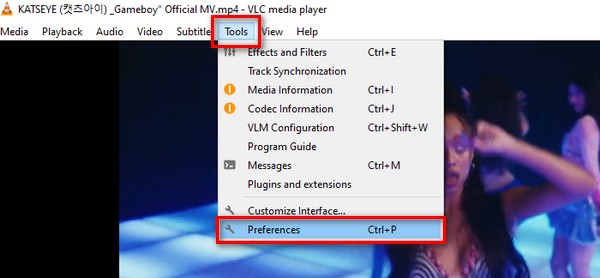
Step 2Select "Swscale" under "Video" > "Filters". And then select the "Super Resolution" drop-down box.
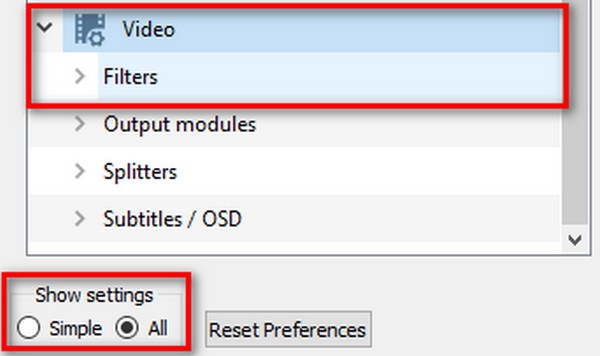
Step 3Click "Save" and restart VLC to apply the changes and improvde video quality.
This easy adjustment can improve your viewing experience—especially if you’re streaming an older or low-resolution video. It’s one more way VLC Media Player improve video quality without needing extra software.
How to Use Filters in VLC to Improve Video Quality
Do you want your videos to appear a little more polished, or colorful? You can use VLC to edit videos with its built-in video filters, which lets you adjust many settings like sharpness, color, contrast, and remove noise. Filters are great to use when you want to spice up the visuals in your videos. In this way, you can also improve video quality in VLC.
Step 1Open VLC, then go to "Tools" then click "Preferences". At the base left corner, switch to "All" settings.
Step 2Navigate to "Video" > "Filters" and experiment with the various filter settings, including "Color Threshold", "Denoise", and "Sharpen".
Step 3Check the boxes for the filters you want to enable, then click "Save". Restart VLC to apply the changes.
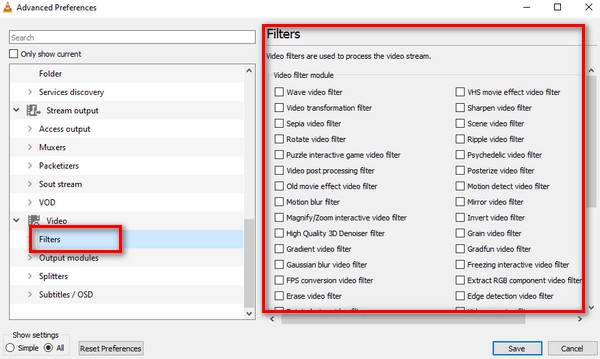
Filters can have a huge impact, whether you’re dealing with a fuzzy video or one that’s far too dark. Therefore, if you’re wondering how to improve video quality in VLC, this can be a fun and individualized way to do so. It’s also another great trick if you're wondering, can I improve video quality with VLC without needing extra tools or advanced software.
Steps to Change Color Range to Enhance Video in VLC
At times, your video could appear flat or washed-out—most likely due to color range settings. The good news? With VLC’s video quality improvement, you can modify the color gamut to achieve deeper blacks, richer colors, and improved contrast. It's a quick method to give your movies individuality!
Step 1Open VLC and go to "Tools" > "Preferences". Select "All" under "Show" settings at the bottom to reveal advanced options. Navigate to "Input / Codecs" > "Video Codecs" > "FFmpeg".
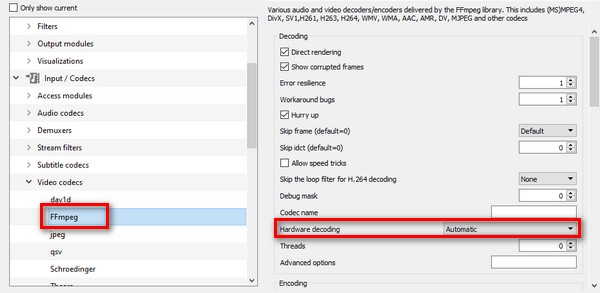
Step 2Look for the "Hardware decoding" section and set the Hardware acceleration decoding to something other than "automatic" (like Direct3D11). Restart VLC after saving the adjustments.
Use VLC Alternative to Improve Video Quality Easily
While VLC is great, sometimes it’s not enough—especially if you want to enhance videos more efficiently without digging through menus. That’s where 4Easysoft Total Video Converter comes in. It is a video editing and conversion package that allows you to upscale your resolution, fix brightness, reduce noise, apply filters, and a few clicks and you're done. So, if you are asking, can I improve video quality with VLC but want an easier way, this software is a good choice.
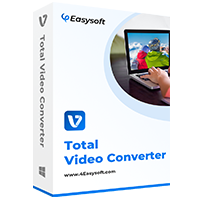
AI-driven video enhancer that automatically improves quality and resolution.
Simple-to-use video editor featuring options for cropping, rotating, trimming, and effects
1000+ popular video and audio formats are supported on all devices.
Deinterlacing and noise reduction for clearer playback on VLC Media Player.
100% Secure
100% Secure
Step 1Click Add Files or drag your videos into 4Easysoft Total Video Converter after launching and registering.
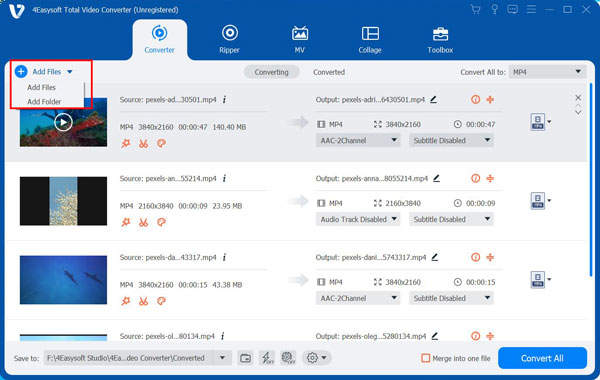
Step 2Access more than 20 useful tools, such as video compression, speed adjustment, quality enhancement, image conversion, and more, by selecting the "Toolbox" tab.
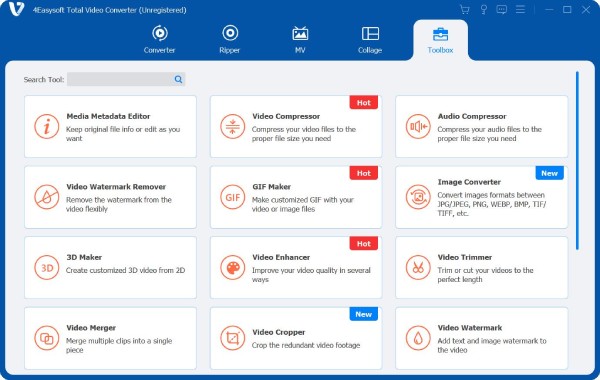
Step 3To use AI to improve your video, launch "Video Enhancer". Video noise can be eliminated, shaky footage stabilized, brightness and contrast automatically adjusted, and resolution upgraded. Simply check the boxes that apply to you.
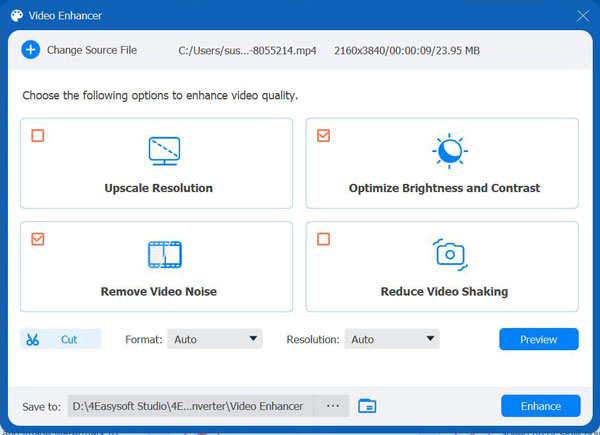
Step 4Select the location for your file's storage, click "Convert All, " and you're finished!
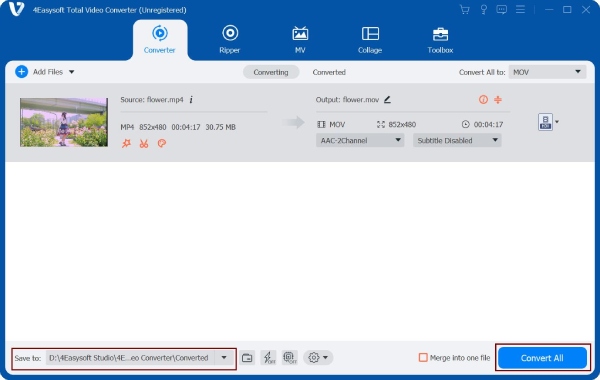
Using 4Easysoft is a much quicker and beginner-friendly option—perfect for improving video quality in VLC without losing performance or your patience! Especially when you find VLC subtitle delay or other issues.
Conclusion
There are many ways to improve video quality in VLC Media Player—from adjusting output modules and enabling super resolution to using filters and changing color range. VLC provides great ways to improve playback but if you want a better, faster, and simpler experience then 4Easysoft Total Video Converter is your best option. This VLC alternative has very powerful video enhancement features and is also easy to use; it really is as simple as editing and upgrading your videos. Whether you're a beginner or pro, this tool ensures you get the best quality without the complicated setup that VLC sometimes requires.
100% Secure
100% Secure


